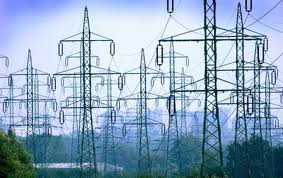India's inability to transmit power threatens socio-economic growth
Updated: Sep 28, 2013 01:26:27pm

“Inadequate attention to enhancing power transmission capacity, the critical triad in the power value chain along with generation and distribution, threatens to jeopardize India’s efforts to raise economic and manufacturing growth and the socio-economic well-being of the people,” said the report made by FICCI-Booz and Company, titled ‘Power Transmission: The Real Bottleneck.’
The report is a grim prognosis as it outlines challenges in generating the capacity that the country requires. However, it provides actionable recommendations to avert a potential crisis, said a FICCI press release.
On the looming threat, Director General, FICCI, Arbind Prasad said, “With a planned generation the capacity addition estimated at 88 GW in the 12th Plan and improved generation with fuel issues getting sorted out for existing capacity, a corresponding increase in transmission capacity is needed to ensure that power generated reaches the end consumer.
“More than 46 per cent of the total investment required (in excess of Rs 2 lakh crore) has to come from private sector. Clearly, successful PPP in transmission would be vital to meet the huge investment and capacity enhancement target in transmission,” he added.
The report highlights various reasons which currently saddle the pace of private investments in the transmission sector along with measures to address them.
Chairman of the FICCI Task Force on Power Transmission, Pratik Agarwal is of the opinion that right planning initiatives can reduce time taken from concept to commissioning by over 30 per cent and encourage use of technology in project execution. It would result in high capacity transmission corridors in much lesser time and resources, he said.
The report has referred to the grid failure which plunged much of northern India for two consecutive days in July 2012. Evidently, the incident has unearthed the enormity of the problem and does not augur well for either India’s potential as a destination for global capital or the increasing economic footprint of businesses within India.
“The transmission bottleneck has thus emerged as one of the primary obstacles in the country’s efforts to overcome power shortages which currently entail a GDP loss of USD 68 billion or 0.4 per cent of GDP,” the release said.
India has obviously not kept pace with capacity creation in transmission and growth in generation over the last decade. While the current power shortage has accounted for considerable GDP loss, it is expected to worsen. Also, the current power system is severely overburdened, and there is a need for increasing transmission lines, even as over 120 projects have been delayed across the country, according to the report.
As far as the government is concerned, it has taken steps in the right direction by opening up the sector to private participation and implementing of Point of Connection (POC) regime.
The report has identified further specific policy interventions which are implementable in immediate future and would allow the country to achieve unprecedented capacity target of 12th plan.
Much like roads, highways, railways and shipping lanes form the key corridors of global trade and economic growth transporting goods and services, Transmission lines ferry power from the generating stations to various demand centers across the length and the breadth of the country. More importantly, while the failure of any one transportation corridors can be offset by other allied means, the power sector enjoys no such luxury. The fact is that power is a commodity that cannot be imported to meet the shortages within the country.
Constituted in April 2013, the role of the FICCI Task Force on Power Transmission was to ascertain the key inhibiting reasons for private players and suggest possible solutions towards addressing these issues.
The report is a culmination of these efforts and provides a well-researched context for bringing the important issues related to transmission sector to the forefront. (KNN/ES)












